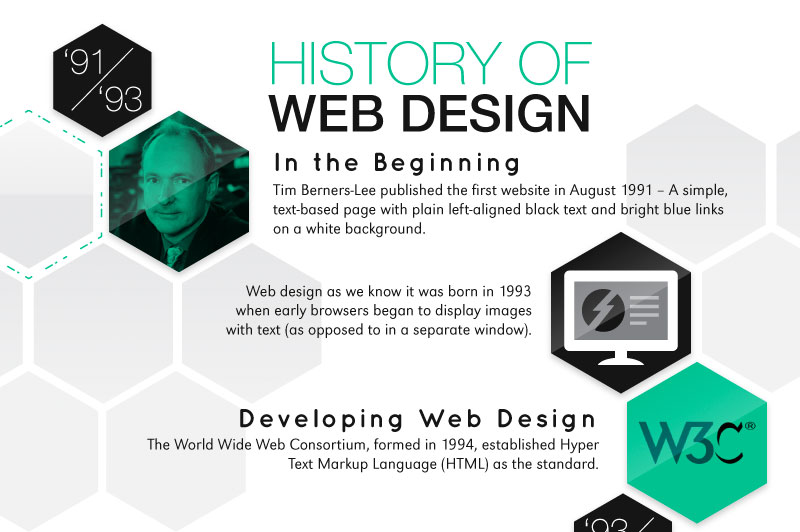The Development Of Web Site Design: From Past To Present
The Development Of Web Site Design: From Past To Present
Blog Article
Uploaded By-Booker Lunde
In the past, web sites were basic and concentrated on details. Navigating was straight, and style was for desktops. Currently, user experience is crucial. Data overviews layouts for very easy navigating. Receptive designs suit various gadgets. Today, dark setting reduces pressure, and minimalist menus enhance navigating. Interactive features engage users, and strong visuals attract attention. AI combination improves interaction. See just how layout has evolved to improve your on the internet journey.
Very Early Days of Website Design
In the very early days of web design, simpleness reigned supreme. Websites were standard, with limited shades, typefaces, and layouts. The emphasis got on giving details instead of fancy visuals. Customers accessed the web with slow-moving dial-up connections, so speed and performance were vital.
Navigation menus were straightforward, typically located at the top or side of the page. Internet sites were created for desktop, as mobile browsing had not been yet prevalent. Web content was king, and developers focused on easy readability over intricate design elements.
HTML was the primary coding language utilized, and developers needed to function within its restrictions. Computer animations and interactive attributes were minimal contrasted to today's standards. Web sites were static, with little dynamic material or tailored individual experiences.
Rise of User-Focused Design
With the development of web site layout, a shift towards user-focused layout concepts has actually become increasingly prominent. Today, producing internet sites that prioritize individual experience is critical for engaging site visitors and achieving business objectives. User-focused layout involves understanding the requirements, preferences, and behaviors of your target market to customize the web site's format, material, and includes accordingly.
Developers now perform complete research, such as customer studies and use screening, to gather insights and comments straight from customers. This data-driven approach helps in producing user-friendly navigation, clear calls-to-action, and aesthetically appealing user interfaces that resonate with visitors. By placing the user at the center of the design process, websites can supply a much more personalized and satisfying experience.
Receptive layout has additionally emerged as a key element of user-focused design, ensuring that sites are optimized for numerous gadgets and screen dimensions. This flexibility enhances accessibility and use, satisfying the varied ways users interact with sites today. In essence, the surge of user-focused design symbolizes a shift towards developing digital experiences that focus on the requirements and expectations of the end customer.
Modern Trends in Web Design
Explore the most recent trends shaping website design today. One famous pattern is dark setting design, offering a streamlined and modern appearance while decreasing eye strain in low-light settings. An additional crucial trend is minimalist navigation, simplifying food selections and enhancing user experience by focusing on essential elements. Integrating micro-interactions, such as computer animated buttons or scrolling effects, can create an extra engaging and interactive web site. Receptive design stays important, making certain smooth individual experiences across numerous tools. In addition, using vibrant typography and asymmetrical layouts can add aesthetic passion and accentuate details material.
Incorporating AI innovation, like chatbots for consumer assistance or customized suggestions, improves individual interaction and improves processes. Accessibility has likewise end up being a substantial trend, with designers prioritizing inclusive layout methods to accommodate varied user requirements. Welcoming sustainability by optimizing web site performance for speed and performance is another arising fad in web design. Working together with customer responses and information analytics to iterate and boost layout constantly is vital for remaining appropriate in the ever-evolving digital landscape. By welcoming these modern fads, you can develop a visually appealing, user-friendly website that reverberates with your audience.
Verdict
As you reflect on the development of website style from the very early days to currently, you can see exactly how user-focused layout has come to be the driving force behind contemporary patterns.
Embrace the journey of adjustment and adaptation in website design, constantly maintaining the customer experience at the forefront.
Keep existing with the latest patterns and innovations, and never stop advancing your approach to produce aesthetically magnificent and user-friendly web sites.
Evolve, adjust, and produce - the future of website design is in your hands.
